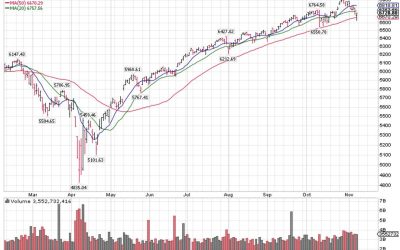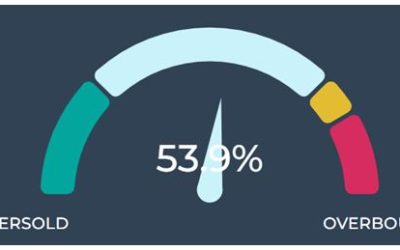by Louis Navellier
July 15, 2025
On Bloomberg Business Week last week, I compared the Trump team’s tariff negotiations to a “game of chicken” between Trump’s team and the opposite side. The TV host said that a “game of chicken” implies a winner and loser, but I begged to differ with him on several arguments against tariffs, including what a “game of chicken” means. As I recall the game, both sides can win by compromise, or both sides can lose.
Specifically, President Trump has proposed a 50% tariff on Brazil (up from 10% currently), effective August 1st, due largely to President Lulu de Silva’s persecution of former President Jair Bolsonaro. Brazil has responded with “reciprocity,” so coffee futures. To me, this tiff with Brazil is the clearest evidence that President Trump is using tariffs as a foreign policy tool. I am not optimistic on a successful resolution of this tiff, since Lulu was also put in jail, and prosecution of political opponents is common in Brazil.
For some other evidence that President Trump is conducting foreign policy via tariff policies, he is now threatening a 35% tariff on Canada, effective August 1st, if Prime Minister Mark Carney does not succeed in curtailing the flow of fentanyl from the north. Obviously, Canada will do whatever it must do to stem the flow of fentanyl and appease President Trump, so I do not believe this 35% tariff will be enacted.
July 9th was the initial tariff deadline for many countries and regions (like the EU), but it was extended in effect to August 1st, so it will be interesting to see how many countries reduce their reciprocal tariffs to get a better deal. August 1st is also the deadline for the EU to negotiate trade “frameworks” with the U.S. The EU, with 27 countries and varying tariffs, is expected to be difficult to deal with, since the EU has many protectionist layers erected to protect domestic industries. Germany’s finance minister warns that the EU should prepare retaliatory measure against the U.S. if they fail to reach a fair deal. Nonetheless, some cooperation at the recent NATO summit was encouraging, so maybe the EU will be more cooperative.
In another series of negotiations, tariffs on Vietnam have been finalized at 20% on exports to the U.S. and 40% on Chinese products sub-assembled inside Vietnam. China also does a lot of their sub-assembly in Mexico, so the Vietnam tariffs are a sign of what the Trump team will do to other Chinese subcontractors.
Tariff games cover commodities, too: The price of copper is soaring after President Trump said he would impose a 50% tariff on copper imports. During a cabinet meeting, President Trump said that he would soon announce tariffs “at a very, very high rate, like 200%,” on pharmaceutical imports. Eli Lilly (LLY) is expected to benefit from tariffs on pharmaceutical imports, since the company has been boosting its domestic manufacturing. The only copper stock I recommend is Peru’s Compania de Minas Buenaventura S.A. (BVN), which has strong forecasted earnings growth, but will likely be impacted by the tariffs.
There is no doubt the tariffs the Trump Administration is imposing are controversial, but the countries that cooperate with the U.S., like Australia and Britain, are only faced with 10% base-line tariffs, which should be offset by any gains in the U.S. dollar in upcoming months. Other countries face high reciprocal tariffs if they erect trade barriers and do not agree to buy U.S. energy or other U.S. exports.
I remain in the camp that when all the dust settles, there will be freer trade will lower tariffs, since many countries cannot fight the U.S., long-term. Meanwhile, tariff revenue to the U.S. Treasury soared to $24.2 billion in May and is now expected to soar to $60 billion, or higher, per month in the upcoming months. This tariff revenue is designed to help reduce the federal budget deficit and offset many of the tax cuts included in the “Big Beautiful Bill” that Congress recently passed and President Trump signed.
Graphs are for illustrative and discussion purposes only. Please read important disclosures at the end of this commentary.
U.S. exports continue to rise as the Trump Administration demands other countries buy U.S. agricultural and energy products in exchange for more favorable reciprocal trade deals. As the trade deficit shrinks, it naturally boosts GDP growth. I am expecting that after the manufacturing sector perks up due to all the on-shoring underway the U.S. will briefly hit 5% annual GDP growth. Since a significant proportion of this GDP growth will be tied to exports, I do not expect that resurging GDP growth will be inflationary.
In the meantime, over $10 trillion in on-shoring is happening in America, led by AI and data centers. The fact that GM is diverting manufacturing back to America from Mexico is encouraging, while European, Japanese and South Korean auto companies are all expected to boost their America manufacturing.
There is no doubt that Britain, much of Asia, Canada, Mexico and many European countries are now in a recession. Some of this is due to aging demographics, shrinking households and a failure to assimilate immigrants. The bottom line is that the U.S. remains an economic oasis since we are food and energy independent, assimilate immigrants well and still have household formation, especially in the Mountain West and South. Our 50 states also compete with each other with pro-business incentives.
Deflation is China is getting worse. China’s Nation Bureau of Statistics announced last week that its producer price index (PPI) declined at a 3.6% annual pace in June, down from May’s negative 3.3% annual pace and worse than the economists’ consensus estimate of a 3.2% decline. The June PPI was the weakest monthly reading in 23 months, signaling that China’s deflationary spiral is accelerating. China’s PPI has been negative since October 2022, so a Chinese currency devaluation may be necessary soon.
Replacing Jerome Powell with a Positive “Kevin” at the Fed
Fed Chairman Jerome Powell is effectively a lame duck and we see many other FOMC members now speaking out about the need to cut key interest rates, which should stimulate the automotive and housing sectors, as well as boost both business and consumer confidence. Specifically, since the June FOMC meeting, Fed Governors Christopher Waller and Michelle Bowman have raised the possibility of a rate cut as soon as July 30th, citing benign inflation data. In fact, the latest FOMC minutes that were released last Wednesday revealed, “While a few participants noted that tariffs would lead to a one-time increase in prices and would not affect longer-term inflation expectations, most participants noted the risk that tariffs could have more persistent effects on inflation.” The FOMC minutes also revealed “considerable uncertainty” about the timing, size and duration of the tariffs’ potential effects on inflation.
One thing we do know is that the next Fed Chairman will be named “Kevin,” since The Wall Street Journal reported that the two leading candidates are Kevin Hassett, one of Trump’s closest economic advisors, and former Fed governor Kevin Warsh. Treasury Secretary Scott Bessent is scheduled to meet with Warsh, so Secretary Bessent will obviously provide his sage advice to President Trump.
Kevin Hassett has been openly critical of Fed Chairman Jerome Powell and said, “Jay Powell is the person who cut rates right ahead of the election to help Kamala Harris” then added that Powell is “doing whatever it is that Elizabeth Warren wants.” Right now, Hassett appears to be more dovish that Warsh, so it will be interesting to see who President Trump picks to be the next Fed Chair, but there is no doubt that key interest rates will be meandering lower on the anticipation of a more accommodative Fed Chairman.
Turning to stock news, I am happy to report that Nvidia (NVDA) is in the news again, since it is the first company to cross the $4 trillion mark in market capitalization. I am proud that Nvidia is by far my largest holding in managed accounts (Nvidia is up to a 16% allocation in some of my portfolios) and we have no intention of selling the company’s stock, since it remains a monopoly, dominating the AI revolution.
Nvidia founder and CEO Jensen Huang visited the White House before his trip to China. Jensen has proven to be a skilled negotiator and has been striving to expand its Chinese operations to sustain its AI dominance. I suspect President Trump provided him with guidelines and talking points for his China trip.
The bottom line is that it is time to remain bullish on America. We have an economic cheerleader in the White House, and Treasury Secretary Scott Bessent has been a calming influence and has helped to better manage Treasury auctions, which reassures Wall Street and boosts investor confidence.
Essentially, all the uncertainty that was plaguing the stock market has largely diminished. The tariffs have boosted tax revenues, and so far, proven not to be inflationary. The 2017 tax cuts are now permanent, offering considerable tax relief for all levels of income, including 90% of taxpayers, according to CNBC.
With more money being put in people’s pockets, prosperity is expected to rise as monetary velocity increases, so I hope you to feel good about our fundamentally superior stocks. Due to recent tax cuts, the surging tax revenue from tariffs, the on-shoring in America and the fact that the Fed will finally join the party and give the market a “turbo boost,” the U.S. economy should accelerate to 5% GDP growth soon!
The post 7-15-25: Trump’s Game of “Tariff Chicken” Enters the Final Stage appeared first on Navellier.







